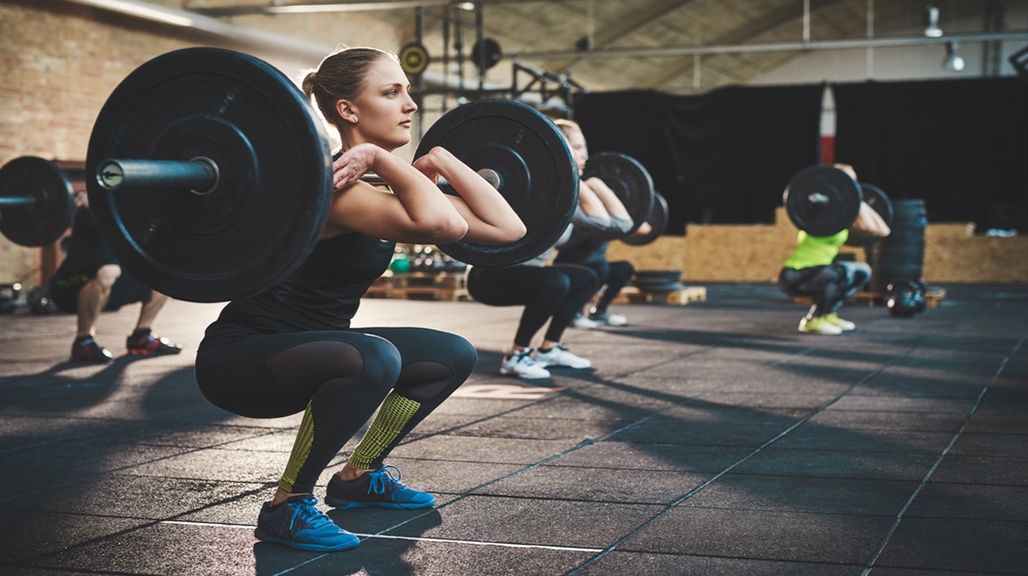Why Strength Should Be The Foundation Of Your Programme
 Contributed by
Chris Richards
October 10, 2016
Contributed by
Chris Richards
October 10, 2016

When creating your own fitness programme, whether you’re training for body composition, performance or muscle mass as your main goal, strength training should be the foundation.
Before we go any further, take note that strength is not an action (lifting maximal weights); it is used to realise these actions and any muscular action requiring tension requires strength.
Force is the foundation of most physical qualities and strength stabilises the body and your actions. For example, if you are running, stronger muscles will absorb impact rather than tendons and joints. Furthermore, the stronger you are, the more efficient you will be at any given movement.
Having strength as a foundation for your workouts is the best way to avoid losing muscle mass when dieting down.
“Your body hates you but it also really likes you” – Top strength coach Christian Thibaudeau
The body adapts to survive, so using muscle mass as a source of energy when in a caloric deficit is much more likely; therefore, providing the body with a reason to maintain muscle mass via strength training is one of our primary concerns as body composition specialists. The best way to keep muscle mass is to challenge the body to produce a high level of force.
How To Make Strength The Foundation
Progressive overload is paramount. Without attempting to improve on past performances, you are just completing an array of exercises in the gym and going through the motions. You might make some progress, but this will be much more difficult to periodise and progress. Learning how to perform basic strength exercises well, with correct bracing and full body rigidity will benefit you no matter what rep range you choose. Put simply: Strength training benefits all other forms of training.
Examples
For more advanced clients, using strength training is a great way to improve body composition as it gives the muscles a harder, fuller look because the fast twitch fibres are mostly on the superficial part of the muscles, whereas slow twitch fibres are located more deeply and less superficially. If you lift heavier you will tend to hypertrophy the fast twitch fibres (on the surface), so if you get lean you will have a harder, more powerful look.
Increasing neural efficiency is also very important over the course of a transformation. The more you can recruit muscles the easier it is to stimulate growth. This also provides greater scope for training and volume variables. With consistent strength training you become more neurally efficient, then when you move onto more bodybuilding work you are better at recruiting those muscles, which makes that bodybuilding work more effective.
Putting Strength to Practice
There are a number of different ways to utilise strength training, but for beginners it may be most beneficial to initially use lower rep ranges and then continue to periodise assistance exercises performed in slightly higher rep ranges.
Once you have exhausted the most basic of strength training periodisation you can look to move onto more complex methods such as:
Ramping – Take 60% of your maximum then work up to your maximum. It excites the nervous system before the lift, you must lift fast with lower reps (no higher than five). The best set is at the end. Use 6-8 sets to reach your maximum weight.
Clusters – 6-12 reps with a weight you could only do with 3 reps, 15 seconds rest between each rep.
EMOMs – Every time a new minute starts you do a set of 1-3 reps which works out to around 12 seconds of time under tension (with the remainder of the minute spent resting). Use 80% of your max for strength, and 70% for 5 reps for hypertrophy. As a guideline, perform this for up to 8-10 minutes.
Wave Loading – 3-2-1 waves are the best for strength with 2-3 minutes rest, for example:
Wave 1
Set 1: 3 reps
Set 2: heavier 2 reps
Set 3: heaver again weight 1 rep
Wave 2
Set 1: attempt the weight you used at set 2 last time for 3 reps
Set 2: attempt the weight you used at set 3 last time for 2 reps
Set 3: go heavier
Wave 3
Progress as with Wave 2.
Complete 3 waves. Start lighter and build up.
Layers – you will only focus on one lift with various loading patterns.
Strength Skill Work – a lot of volume to work on technique, practice makes perfect. Intensity around 80% or below.
Partial Lifts – this can be used to strengthen weak points in there lift which overall will help you perform your main exercise.
For example, if you struggle with the lock out on a bench press, then performing a barbell floor press will assist that.
All of these can be completed in two 2-3 weeks cycles.
Your body must feel that maintaining your muscles mass is a top priority so you must consistently challenge your strength; if you fail to do so your body might deem that muscle mass as surplus to requirements.
Visit Chris’s page to find out more about his work.
This post was first published on UP Fitness blog and has been reposted on Executive Lifestyle with the permission of the author.
Edited by Amber Valencia
Image credit: Shutterstock
Did you enjoy this post? Please comment, like and share!











Sorry, the comment form is closed at this time.